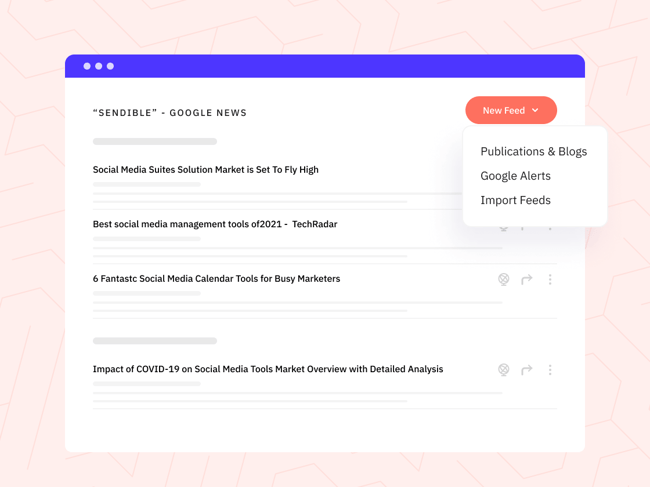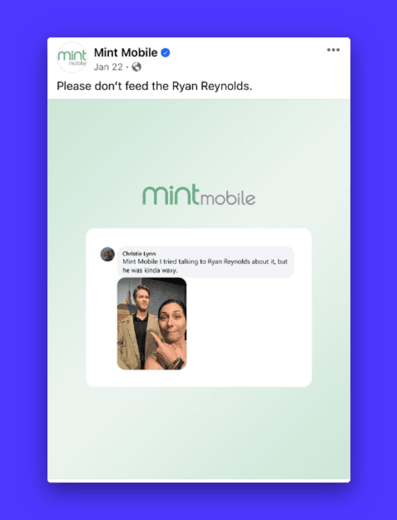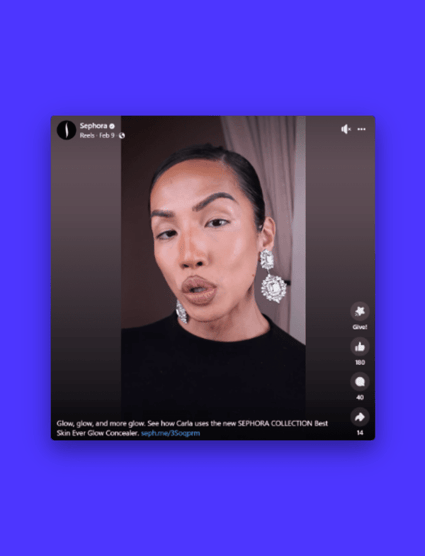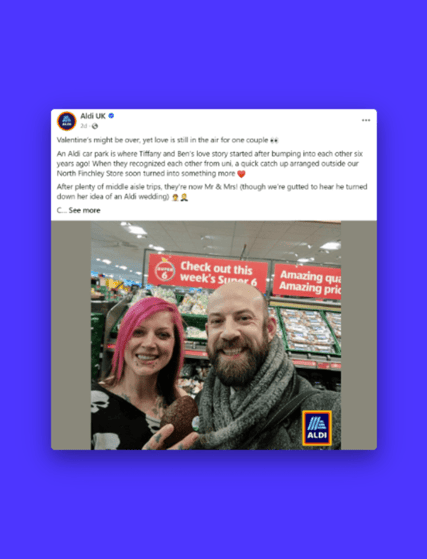Sendible insights Content Curation 101: 7 Steps for Success and 5 Examples to Inspire Your Own
Standing out on social media in 2025 is more challenging than ever. With platforms evolving rapidly and user expectations skyrocketing, brands can no longer rely solely on in-house content creation to capture attention. Today’s audiences demand hyper-relevant, engaging, and trustworthy content that reflects their interests and values.
That’s where content curation comes in. By carefully selecting and sharing valuable content from reputable sources, you can establish your brand as a trusted authority, drive meaningful engagement, and expand your reach—all without the pressure of producing everything from scratch.
In this guide, we’ll break down everything you need to know about content curation, from the fundamentals to actionable strategies and inspiring examples.
Ready to build a content curation strategy that resonates with your audience and keeps your brand at the forefront of social media? Let’s dive in!
- What is content curation?
- Why is content curation so important?
- 7 steps to establish your content curation strategy
- 6 ways to find trustworthy sources
- How to know if the source fits my client or industry
- 5 Brands that absolutely slayed at content curation
What is content curation?
The process of finding, choosing, and disseminating excellent information to your audience on social media is known as content curation.
You're effectively working as a filter or curator, sorting through the massive quantity of online information to identify content that fits your audience's interests, wants, and preferences—instead of producing all the content yourself.
This carefully chosen content can include articles, blog posts, videos, infographics, memes, and any other information that you think will connect with your audience and improve their social media experience.
The goals of content curation are to engage your audience, start discussions, and establish your brand as an informed and reliable resource within your sector or speciality.
Why is content curation so important?
Content curation is a valuable strategy for keeping your brand's profiles active, engaging your audience, staying informed, and establishing your brand as a trusted authority in your industry.
It's important to social media managers for several reasons:
1. Keeping up a consistent presence
Regular and steady content updates are essential for social media platforms to function well. You can use content curation to add well-chosen content to original content, keeping accounts lively and interesting even when you're not actively producing new content.
2. Adding value to followers
By carefully selecting pertinent, high-quality content from various sources, you can provide your followers with insightful analysis, amusement, and useful information. Ultimately, this increases audience trust, credibility, and loyalty, boosting engagement and strengthening brand affinity.
3. Staying relevant and informed
Social media managers must stay updated on the latest trends, news, and discussions in their industry or niche. Content curation lets you monitor what's happening in real time and share timely and relevant content with your followers, demonstrating your expertise and keeping your audience informed.
4. Expanding reach and visibility
Curated content often comes from various sources beyond the brand's network. By sharing content from influencers, industry experts, or other relevant accounts, you can tap into new audiences and extend their reach, increasing your brand's visibility and attracting new followers.
5. Fostering community engagement
Curated content can spark conversations, debates, and interactions among followers. You can use curated content to initiate discussions, solicit feedback, or ask questions. That will help foster a sense of community and build stronger relationships with their audience.
7 Steps to Establish Your Content Curation Strategy
Content curation has become a cornerstone of effective social media management. By strategically selecting and sharing relevant content from diverse sources, you can engage your audience, build credibility, and enhance brand visibility.
With the right steps in place, it should be easy to curate your content. So, let's look into 7 steps to establish your content curation strategy.
#1 Define your goals
The first question you should ask yourself is why you want to curate content. Is it just something new you want to try, or do you believe the information is something that will resonate with your audience?
Before diving into content curation, it's essential to clearly define your objectives. Whether you want to increase brand awareness, drive website traffic, or generate leads, these are all valid reasons for content curation.
Still, it's key to establish this upfront. By outlining your goals from the start, you can tailor your content curation efforts to align with your overarching social media strategy and effectively measure success.
#2 Identify your target audience
Understanding your audience is key to successful content curation. Take the time to research and analyze your target demographic's interests, preferences, and behaviour patterns on social media.
This insight can help you curate content that resonates with your audience and fosters meaningful engagement.
#3 Define which social media outlets to use
Not all social media platforms are created equal; each has unique audience demographics and content preferences. Consider which platforms your target audience frequents most and focus your content curation efforts accordingly.
Whether it's Facebook, Instagram, X (Twitter), LinkedIn, or others, tailor your curated content to suit the platform's format and audience expectations.
If you want an easy way to share curated content, check out Sendible's unique share button.
It can be installed on any website or blog you own, making it easy for team members to choose from a library of content you've curated and share directly through the Compose Box without needing to leave your website.
Plus, if you are browsing the web and come across some content you would like to add to your content curation strategy, be sure to add Sendible's Google Chrome extension to your browser.
That way, you can easily publish or schedule content you come across while browsing the web without having to open our social media tool.
The easier the process to share curated content is, the better set up for success you will be.
#4 Check out the competition
Be sure to always keep your finger on your competitor's pulse. You never want to copy them, but learning valuable insights into their content curation strategies is helpful.
Check out the content types they share, how often they post, and which posts get the most engagement. This competitive analysis can help you identify market gaps and refine your content curation approach.
#5 Create shareable content
While content curation primarily involves sourcing and sharing third-party content, don't overlook the importance of creating original, shareable content.
A good rule of thumb is 60% curated content and 40% original content. As a brand, you want other brands to share your content, so make sure you create top-notch content that excites them.
By producing high-quality, engaging content that adds value to your audience's feed, you can establish your brand as a thought leader and drive organic reach and engagement.
#6 Stay on a solid schedule
Consistency is key when it comes to content curation. Establish a regular posting schedule and stick to it to maintain a steady flow of content on your social media channels.
Whether you post daily, several times a week, or on specific days, consistency will help keep your audience engaged and coming back for more.
If you struggle with coming up with content regularly, be sure to empower yourself with success through a social media content calendar. Instead of worrying about what you will post on the day you need something to go out, you can set some time aside and map your whole month out.
Plus, if you tap into Sendible’s content library, you can set yourself up for success by pumping out posts when inspiration strikes and saving them to be scheduled later.
That will ensure that you keep the consistency in your posting and also continuously offer the opportunity for engagement.
#7 Continuously analyse the results
As you implement your content curation strategy, monitoring and analysing its performance is key to its success.
If something seems to be working poorly, the data will help you make effective decisions about whether or not to continue a strategy. Use social media analytics tools to track key metrics such as engagement rate, reach, and click-through rate.
By analysing the results, you can identify trends, understand what resonates with your audience, and refine your strategy to optimise results.
Sendible allows you to label your posts with Campaigns, enabling you to easily track groups of content to see if they're bringing in wanted results.
6 ways to find trustworthy sources for your content curation to share on your client’s social media
If you really want to prove the ROI of your social media management services to your client, you’ll need to add trustworthy sources into your content curation mix.
1. Find online communities
People with shared interests congregate in online communities and help each other by sharing content their fellow members might be interested in.
Chances are, you’re involved in one of these communities without even realizing it.
Take a look at your personal Facebook News Feed. How many posts on there are notifications of somebody publishing external content to a Facebook group?

How to Create a Facebook Group for Brands (That Works!)
Whether you’re part of a local neighbourhood watch or enjoy browsing marketing news, there’s a high chance you’re involved in an online community.
Guess what? Your client’s audiences are, too.
To find the communities your client’s target audience is lurking in, you could:
- Send customer surveys, asking previous purchasers where they hang out online.
- Using community-cultivating websites - like Reddit and Quora - to find people based on their interests.
- Googling “INDUSTRY + forum”:

You're likely wrong if you think your client’s industry is too boring or unique to have an online community of raving fans. Heck, there’s a subreddit of over 2,700 people who want to share photos of old toasters. Remember: the Internet has no limit!
But how do you use these online communities to find trustworthy sources for your client’s content curation?
It’s simple: sieve through the content these people are sharing. You might spot a link to a blog post that is gaining the most traction in the online community, which means it’s proven to be popular and authoritative by people who know the ins and outs of the topic.
2. Use Buzzsumo
Fancy investing a bit more cash into your client’s content curation process?
Buzzsumo is a fantastic tool to help with this, as it helps to identify the most popular content in any industry.
Type your client’s niche into the search bar and find an organized list of content with the highest number of social shares:

Using my example, we can see that The Orange County Register’s blog post has the highest volume of engagements for articles on the topic of “fishing tips”.
Not only does this nifty trick help find content that’s already proven popular with your client’s target audience, but it also quickly sieves out the sources that could be untrustworthy and ruin your client’s social presence.
That’s because an article with 5,400+ social shares is much more likely to be trustworthy than one with six, right?
You can get more bang for your Buzzsumo buck by using the data you collect to find other content. Instead of settling on the first handful of results, click on the article and route around the blog it’s published on.
Can you find any other blog posts that might be less shared than the article you originally found? (Plug the new URL into Buzzsumo to find how many shares it has.)
If so, it could be a fantastic addition to your content curation queue. You can also subscribe to their blog or add the RSS feed to your social media publishing tool. But we'll talk about this in the last step.
Since you’re not sharing over-promoted content that your client’s audience may have seen before, you’re proving your client as an industry leader and offering value their audience might not find elsewhere.
3. Make the most out of user-generated content (UGC)
Ensure to track and add user-generated content to your curated content library.
That could be anything from:
- Tweets that mention how much they love their new product.
- Testimonials on their Google Business listing.
- Photos from their customers on Instagram.
- Product reviews on their blog.
Why wouldn't you use this in your client’s social media calendar?
Content created by your client’s audience is called User-Generated Content - or UGC, for short.
You can and should be using UGC when curating content for your clients. That’s simply because your client’s audience is more likely to trust a brand when it’s been recommended by their friends.
In fact, 89% of consumers said that the reviews would impact their decision to use the store in some way. If you could show your client’s testimonials on their social feeds, your content curation efforts would be a great investment of time.

14 B2B Social Media Content Ideas that Work in 2023 (+ Examples)
Nowadays UGC is mostly in form of Instagram Reels and short-form TikTok videos. This is the best performing social media content out there, but it also takes time to produce. So sourcing it from your audience will not only keep your brand relevant, but also save you valuable resources.
Turning customer feedback into amazing social media posts will save you time, while boosting engagement and trust.
4. Create (and follow) Twitter (X) lists
One of the most efficient ways to curate content is by using X Lists (formerly Twitter Lists). These lists act as personalised feeds, allowing you to group and monitor accounts relevant to your client’s industry, making it easy to sift through quality content without wading through the noise of a standard feed.
Why X Lists are effective:
- Stay updated on industry trends: By following curated accounts, you’ll have a constant stream of fresh, relevant content to share.
- Engage with key influencers: Interacting with the accounts in your list helps build relationships and increases visibility for your client’s brand.
- Simplify content curation: With a focused feed, you can easily identify and share high-quality, on-brand content.
Example in action:
If your client is in the wellness industry, you could create lists like:
- “Health and Wellness Experts” featuring accounts like @MindBodyGreen and @WellnessMama
- “Fitness Influencers” with profiles like @KaylaItsines and @ChloeTing
By browsing these lists, you can discover popular content already resonating with audiences and share it as part of your client’s content strategy.
5. Streamline content curation with Feedly and UpContent
Content curation is much easier when you have the right tools at your disposal. Instead of relying on outdated methods, modern tools like Feedly and UpContent are designed to help you discover, organise, and share high-quality content tailored to your client’s industry. Here’s how they work and why they’re great for curating trustworthy sources:
1. Feedly: AI-powered content discovery
Feedly is a powerful RSS aggregator that uses AI (via its Leo assistant) to help you discover content tailored to your client’s needs.
- How it works: Feedly allows you to create personalized feeds by following blogs, websites, or keywords. With the AI assistant, you can filter out irrelevant content and prioritize topics or trends your audience cares about.
- Why it’s great: Its advanced filters and AI capabilities save time by automatically surfacing the most relevant content. You can also integrate Feedly with social media tools like Buffer or Sendible for seamless scheduling.
- Best use case: Curating evergreen and trending industry content for a consistent social media presence.
2. UpContent: Simplify collaboration and content approval
UpContent takes content curation a step further by offering team collaboration features and approval workflows, making it ideal for agencies or businesses with multiple stakeholders.
- How it works: UpContent helps you discover articles based on custom topics and organize them into shareable collections. Its approval workflows make it easy to get client or team feedback before posting.
- Why it’s great: The collaboration tools ensure that every piece of curated content aligns with your client’s brand voice and strategy. Additionally, UpContent integrates with tools like Sendible for effortless publishing.
- Best use case: Streamlining content curation for teams managing multiple social media profiles or client accounts.
6. Use your social media management tool's RSS feed
Following your trusted RSS feeds or setting up Google Alerts to automatically post meaningful updates to your profiles directly from your social media management tool will save you a great amount of time.

RSS feeds are a great way to find quality content based on specific topics, a particular company or similar. You'll also be able to set up an RSS auto-poster if you wish so that the RSS feed's content is automatically pushed out.
While quickly finding relevant articles to share with Sendible's RSS feed tool is an amazing tactic, it shouldn't become your entire strategy as you don't wish to appear bot-like to social media platforms.
How do I know if the source fits my client or industry
When curating content for your or your client’s social media, it’s crucial to ensure the sources you choose are reputable, trustworthy, and align with respective brand and industry.
Here are the updated steps and tools to help you confidently evaluate sources in 2025:
1. Check domain authority and site credibility
Use tools like Ahrefs, Semrush, or Moz Link Explorer to evaluate a website’s domain authority (DA) and page authority (PA). These metrics indicate how trustworthy and reputable a site is.
- Aim for sources with a DA of 40+ and a PA of 30+ for highly reliable content.
- Review the number of linking domains and backlinks to assess how widely trusted the source is.
2. Review traffic insights
Tools like SimilarWeb or Google Analytics (if available) can show traffic trends and audience demographics for a website. A site with consistent or growing traffic is more likely to be a reliable source.
3. Analyse the author’s expertise
Look into the credentials of the author or organization behind the content:
- Do they have recognised expertise in the field?
- Are they regularly cited by others in the industry?
- Is the content backed by credible data or references?
4. Evaluate content quality and relevance
Consider whether the content aligns with your client’s brand tone and target audience:
- Does the content address current trends or issues?
- Is it well-written, free of errors, and professional in tone?
- Does it avoid clickbait headlines and provide value to the reader?
5. Check social proof and engagement
Evaluate the article’s popularity and relevance by looking at social shares, likes, or comments:
- Use tools like BuzzSumo or ContentStudio to analyze how well a piece of content has performed on social media.
- Look for content with significant shares or discussions, indicating audience approval and authority.
6. Run SEO keyword checks
Use SEMrush or Ahrefs to see if the source ranks for relevant keywords. High-ranking content in your client’s niche indicates relevance and credibility.
7. Assess topical relevance with AI tools
Leverage AI-driven tools like ChatGPT, Notion AI, or Jasper to analyse the content for its topical relevance to your client’s industry. These tools can provide summaries, tone analysis, or insights into how the content aligns with your strategy.
8. Use niche-specific tools for deeper insights
Depending on your client’s industry, specialized tools like Muck Rack (for PR content) or Techmeme (for tech news) can help vet sources specific to their niche.
Example in Action:
Let’s say you or your client operates in the eco-friendly fashion industry. You find an article on sustainable materials:
- Run the website through Ahrefs to confirm its DA is above 40.
- Use BuzzSumo to see if the article has significant social engagement.
- Check the author’s credentials for expertise in sustainability.
- Confirm its relevance to your client’s audience by analysing SEO keywords like “sustainable fashion trends.”
Evaluating sources may take a few extra steps, but it’s critical for establishing trust and authority. By vetting content thoroughly, you’ll ensure every post reflects brand values and resonates with target audience. This strategic approach not only boosts engagement but also reinforces your expertise as a social media manager.
5 Brands that absolutely slayed at content curation
Now that we have looked into all things content curation let's take what we learned and see what that might look like in action.
Below are 5 brands that absolutely slayed at content curation. Let's see what they did and why it worked.
#1 Mint Mobile

What did they do?
Mint Mobile is a pretty popular brand, not only for its cheap phone plans but also because Ryan Reynolds is its spokesperson. That fact alone should generate popularity (and it certainly does). However, the brand has a unique personality and tone of voice that only Ryan Reynolds himself could get away with. From using curse words in copy to making fun of other brands, the brand's unique personality shines through in every post.
In the example above, Mint Mobile reposted someone's Instagram post with a selfie of the individual and a wax version of Ryan Reynolds. They added a caption responding to the original poster and then shared it on their social media pages.
Why did it work?
The reason this curated content did so well is that the brand stayed true to its voice and shared content that would get its followers to interact and engage with it. Not every brand can tell people not to feed Ryan Reynolds, so Mint Mobile followers had some fun with it!
The takeaway:
If someone tags your brand with something fun, find a way to incorporate it to stay true to your brand's voice, get your followers engaged and talk more about your brand.
#2 Wendy's

What did they do?
Wendy's is already pretty popular for their cheeky responses and roasting other brands. In the post above, Wendy's absolutely made fun of McDonald's and got their followers engaged in the comments, which really made the post take off.
Why did it work?
Wendy's followers are there for fun. And that's exactly what Wendy's gives them – quite consistently. The brand is NOT known for its high-quality images and beautiful feed. It's known for its humour and laughing good times.
The takeaway:
Embrace your brand's voice. If you have a positive and inspiring tone, and that's what followers are tagging you, then share it! If you find articles and posts similar to your tone, don't be afraid to add them to your curated content schedule.
#3 Sephora

What did they do?
Sephora is a known makeup brand whose slogan is "We belong to something beautiful." That being said, everything that Sephora creates and curates is intended and focused on something beautiful. The brand frequently partners with influencers who share experiences on using the brand's products. In the scenario above, Sephora shared a video of a woman named Carla using its products.
Why did it work?
Sephora's followers are interested in all things beauty. By partnering with someone relatable, the brand tapped into a unique way to share curated content. Followers see their brand's product in action, so the brand definitely wins from this.
The takeaway:
Consider sharing user-provided photos and videos if your brand has a product or service. That way, it is a unique take and review of your brand's products and services. It will diversify your content and provide an elevated review for your followers.
#4 Aldi UK

What did they do?
Aldi is known for its super low prices and awesome quality. The brand remains relatable by sparking conversations with its users. In the example of curated content above, Aldi shares a love story that happened in its own parking lot.
Why did it work?
The brand found a way to get people engaged and talking about it. Instead of just focusing on what the brand sells, it focused on a human interest love story that happened at the store. This was an excellent idea, as followers loved reading about the story and were highly engaged with the post.
The takeaway:
Find a way to humanize your brand, regardless of what you sell. People want to know that your brand loves people. So, find a way to make that stand out on social media. Whether sharing curated content that speaks to your followers or creating your own content, keep your brand relatable so your followers will stay engaged.
#5 Baseball America

What did they do?
Baseball America is a news channel for all things baseball. The brand currently has more than 200k followers on Facebook and consistently shares content from articles it has created. To break things up a bit, the brand called out MLB for a video they posted that had some of their players.
Why did it work?
Since Baseball American generally just posts articles they created themselves, reposting content from another brand is something quite unusual for them. Since this was different, followers enjoyed the change and engaged with the brand.
The takeaway:
Having curated content on the schedule is a great way to break up the monotony and keep things lively on your social media pages.
Final thoughts on content curation
Standing out on social media in 2025 is not only possible but also within your reach. Simply follow the tips above to create a solid strategy, and check out some unique social media accounts to inspire you.
Once you're feeling inspired, create the top content curation strategy to help your brand achieve that level of success.
Ready to be empowered by top-notch social media tools? Learn how with our powerful scheduling platform!
Freya Laskowski
Freya is an SEO consultant that helps brands scale their organic traffic with content creation and distribution. She is a quoted contributor in several online publications, including Business Insider, Fox Business, Yahoo Finance, and the Huffington Post. She also owns CollectingCents- a personal finance blog that she grew from the ground up.
You can reach out to her at freya@collectingcents.com
Text copied!







